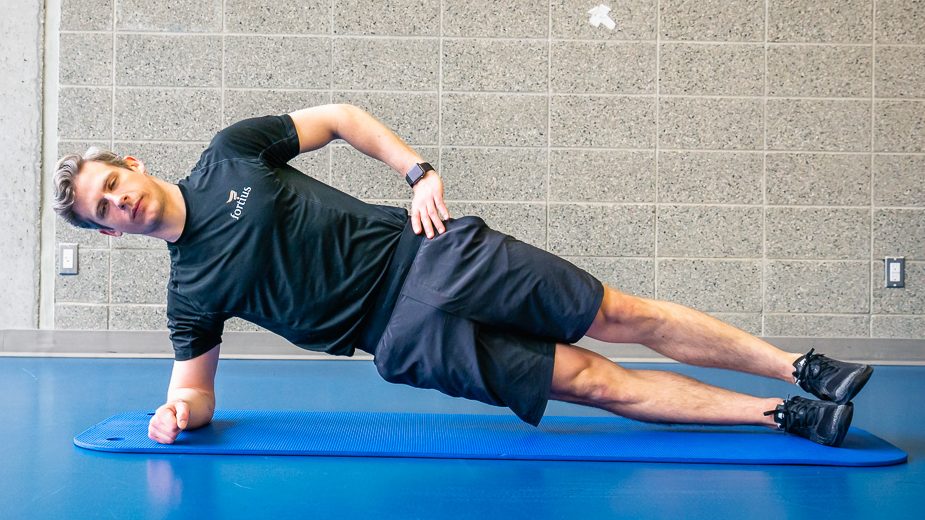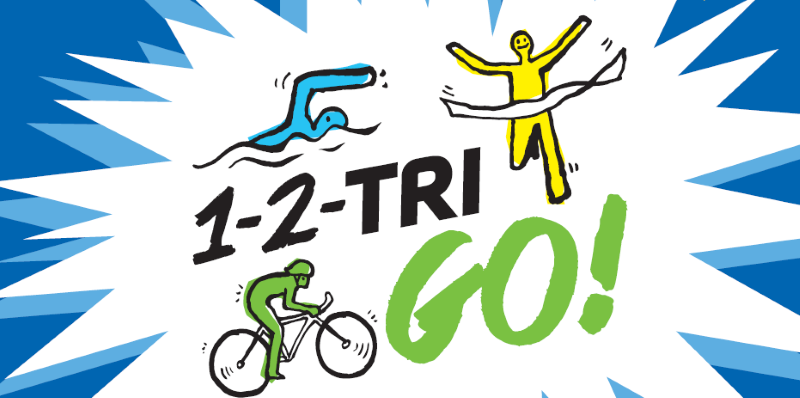How to build a well-balanced strength training session | October 25, 2019 | by Molly O’Brien
Many of us know the feeling – we walk into the gym, fresh workout gear on and good tunes going, ready for a great session; we hit the treadmill for a few minutes to get the blood flow going, buzz through some warm-up stretches we’ve done since high school and then … we draw a blank. Rows of dumbbells, machines and mats stare back at us and we contemplate just spending the next 30 minutes on the treadmill.
Whether you don’t know what to do today because you’re new to the gym scene, your old routine isn’t doing it for you any more or you are just between training programs and need some inspiration, here are some basic tools to create the well-balanced strength training session you’re looking for.
TRAINING SESSION VS. TRAINING PROGRAM
Before we begin, it’s important to distinguish a strength training session from a strength training program.
Strength training session
A strength training session is a stand-alone workout that is generally designed to be fun and challenging, and may provide learning opportunities on exercise techniques. These can include group classes and any other training session that is not part of a regular training program.
Strength training program
A strength training program is more involved and is based on an assessment of an individual’s current ability, a realistic and clear training goal and an understanding of basic biomechanics and exercise physiology. Programs should be created by exercise professionals and should include strategically selected exercises, intensities and set/rep schemes based on the client’s ability and training goal.
A program also requires consistent and effective execution – this may be 2-3 sessions per week or up to 6-10 sessions per week for those with more complex training goals. The benefit of a training program is that the client can concentrate their efforts around a specific goal and generally see more efficient results.
5 STEPS TO A WELL-BALANCED TRAINING SESSION
If you do not have access to an exercise professional, it is still possible to create great training sessions. Below are five steps to building your own well-balanced training session:
- Get clear on the goal
- Select your movements
- Assign your sets, reps, tempos and rest
- Structure the session
- Complete, track, repeat
Get clear on the goal
We can make the design of a training session far simpler when we define our goal(s) ahead of time. Do we want to work on our full body strength or balance, learn new movements or get really sweaty? It is also important to consider how much time you have and what equipment you will have access to.
Our sample individual for today is looking to build general, full-body strength, has <1 year of training experience, has roughly 60 minutes for today’s session and will use a basic hotel gym.
Select your movements
There are several different “buckets” of human movement patterns that we can use to create our sessions. Based on an individual’s training goal and the session that we are planning, we may choose to select movements that fall into all, many or only a few of these categories:
Categories of movement:
- Lower Body – Knee Dominant
- Examples: Squat, lunge, step-up
- Lower Body – Hip Dominant
- Examples: Deadlift, hip thrust, glute bridge, hamstring curl
- Upper Body – Horizontal Push
- Examples: Pushup, bench press, cable press
- Upper Body – Horizontal Pull
- Examples: Inverted row, cable row, dumbbell row
- Upper Body – Vertical Push
- Examples: Military press, landmine press
- Upper Body – Vertical Pull
- Examples: Pullup/chinup, cable pulldown
- Locomotion
- Examples: Crawling, farmer’s carry, sled push
- Core
- Examples: Plank variations, bird dog/dead bug, cable chops/lifts
- Speed & Power
- Examples: Sprints, jumps, plyos, medicine ball throws, Olympic lifts
Within these categories, there are an almost infinite number of exercise variations available. A quick scroll through Instagram will provide option overload and, although this is tempting, I would advise that using basic movements like those listed above will provide a better base to start.

For our sample individual, we will select six basic strength movements (three lower and three upper body patterns) as well as some core drills:
- Knee Dominant: Dumbbell Goblet Squat
- Hip Dominant: Glute Bridge, DB Single Leg Deadlift
- Horizontal Push: Pushup
- Horizontal Pull: 1 Arm Dumbbell Row
- Vertical Push: ½ Kneel 1 Arm Press
- Core: Side Planks, Plank Climbers on Swiss Ball
Assign sets, reps, tempos and rest
Now that we know what movements we want to do, we need to establish some parameters for each movement. Performing two sets of 30 light squats is different than six sets of three very heavy squats, and we need to have a rationale for our selection. Below is a helpful chart; for individuals who are newer to training or are not training consistently, it is generally wise to train within the muscular endurance or general strength/hypertrophy ranges to avoid injury.
| Load (% of 1RM) | Rep Range | Sets / Exercise | Rest | |
| Muscular Endurance | <40% | 13+ | 2-3 | 30-60s |
| General Strength / Hypertrophy | 65-85% | 6-12 | 3-6 | 30-90s |
| Strength (low/mod speed) | >85% | 1-6 | 3-6 | 2-3 min |
| Power (high speed) | 75-90% | 1-5 | 3-5 | 2-5 |
We can also use tempo, the speed of the movement, to allow us to perform our reps with less weight and more time to focus on technique.
For our sample individual, we will work within the general strength/hypertrophy range for our strength movements, and the muscular endurance range for our core drills:
- Knee Dominant: Dumbbell Goblet Squat, 3 x 12
- Hip Dominant: Glute Bridge 3 x 12, DB Single Leg Deadlift 3 x 8 per leg
- Horizontal Push: Pushup 3 x 10
- Horizontal Pull: 1 Arm Dumbbell Row 3 x 8 per arm
- Vertical Push: ½ Kneel 1 Arm Press 3 x 8 per arm
- Core: Side Planks 2 x 30s per side, Plank Climbers on Swiss Ball 2 x 15 per leg

Structure the session
Our final step before training is to structure the session. Exercises can be performed individually for maximum focus on form and loading, or as part of a pairing or small circuit. Performing exercises individually takes time but is great for building strength and is more easily done in a shared gym space; pairings or circuits save time and provide some conditioning, but fatigued muscles may result in less load being used or form failure. Choose wisely!
For our sample individual, we will create some pairings to save time, but we will choose exercises that do not require the same muscle groups to spare form.
A1. Dumbbell Goblet Squat 3 x 12; pair with
A2. 1 Arm Dumbbell Row 3 x 8 per arm
Rest 30-60s
B1. Dumbbell Single Leg Deadlift 3 x 8 per leg
B2. ½ Kneel 1 Arm Press 3 x 8 per arm
Rest 30-60s
C1. Pushup 3 x 10
C2. Glute Bridge 3 x 12
Rest 30-60s
D1. Side Planks 2 x 30s
D2. Plank Climbers on Swiss Ball 2 x 15 per leg
Rest 30s
Complete, track, repeat!
Now it’s time to complete the session! It’s always encouraged to record your workouts, along with the weight used for each exercise, so that you can challenge yourself to improve in form, number of sets or reps, and/or in weight from session to session.
This article contains the information you need to create great training sessions for a wide variety of goals and settings. A well-balanced training session can be fun, challenging and a great opportunity to learn new movements.
Remember that a training program is designed by an exercise professional, includes specific movements and sets/reps, and can help you to make more efficient progress toward a specific goal.
For more information on program design and other Fortius Strength and Conditioning services, book a consultation with one of our coaches today!




